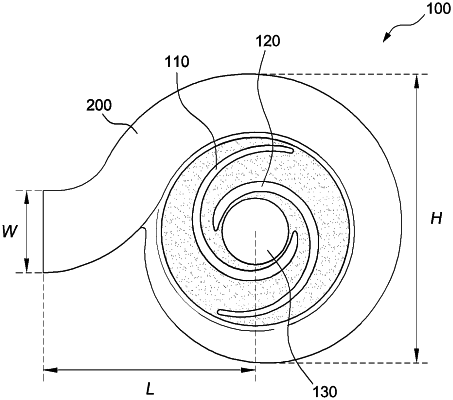| CPC F04D 29/445 (2013.01) [F04D 1/06 (2013.01); F04D 7/04 (2013.01); F04D 29/225 (2013.01); F04D 29/30 (2013.01); G06F 30/17 (2020.01); G06F 30/27 (2020.01); G06N 3/086 (2013.01)] | 6 Claims |

|
1. A design method of two-vane pump for wastewater using machine learning, the design method comprising:
a) setting an objective function;
b) setting design variables of an impeller and a volute for deriving the set objective function and a range of each design variable;
c) deriving a plurality of experimental points including values of the design variables within a range of a design variable;
d) generating an input value by calculating a value of the objective function through numerical analysis of each of the derived experimental points;
e) constructing a surrogate model through machine learning for the input value;
f) Deriving an optimal design of the two-vane pump for wastewater from the constructed surrogate model; and
g) outputting at least one of a visual representation of the optimal design or a design value associated with the optimal design;
wherein the design variable includes:
a first variable which is a y-axis displacement of one end of the impeller located on an inlet side of a wastewater pump;
a second variable that is a y-axis displacement of another end of the impeller; and
a third variable that is a cross-sectional area according to a volute angle of the volute;
wherein in the e), the surrogate model is constituted by a radial basis neural network (RBNN) artificial neural network;
wherein the e) includes:
e1) deriving a variable value for constructing the surrogate model through machine learning for the input value; and
e2) constructing the surrogate model using the derived variable value; and
wherein the f) includes:
f1) predicting the objective function value by substituting a randomly selected design variable value in the surrogate model into a genetic algorithm;
f2) deriving a pareto-optimal front surface based on a correlation between predicted objective function values; and
f3) deriving an optimal design of the two-vane pump for wastewater that is a design variable value for a target design function value in the derived pareto-optimal front surface.
|